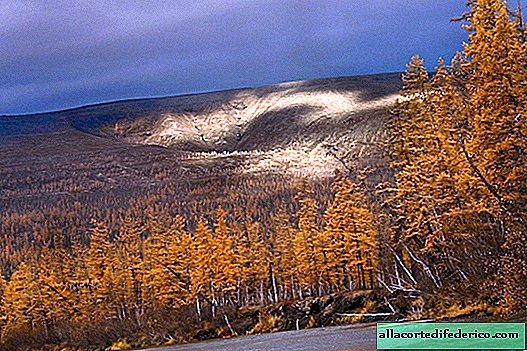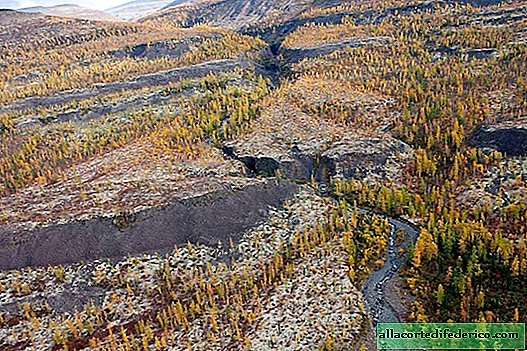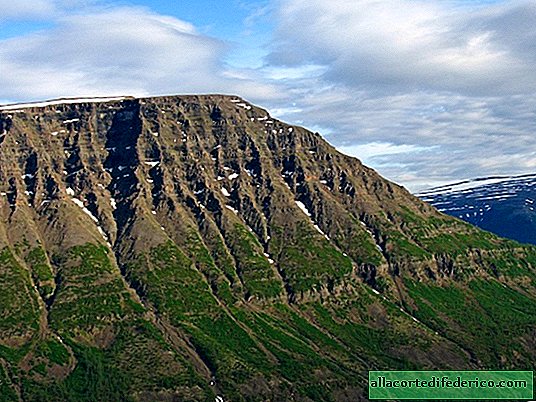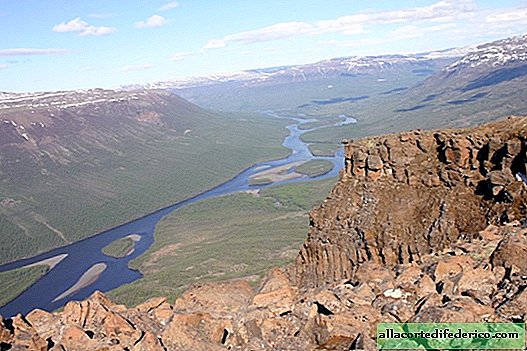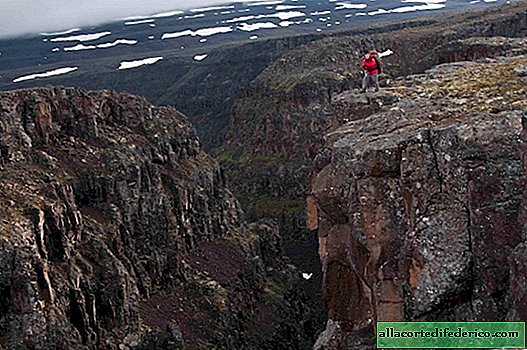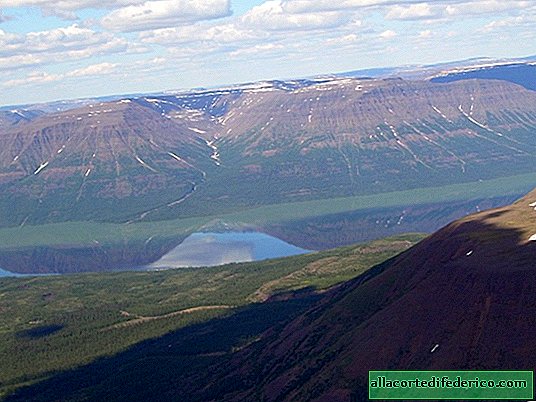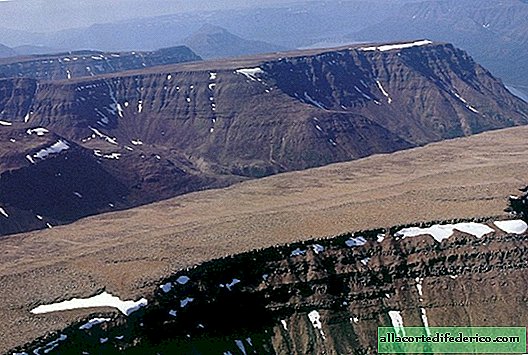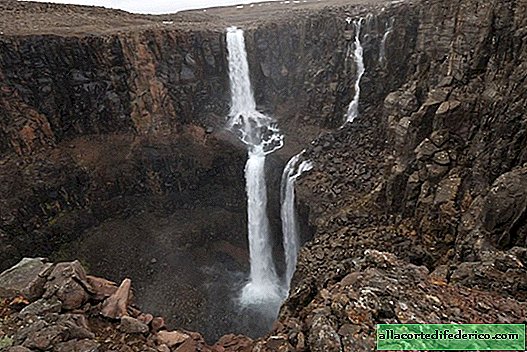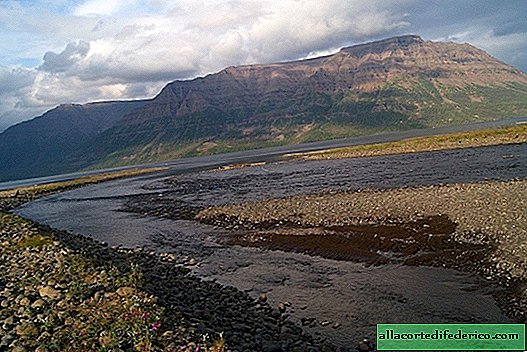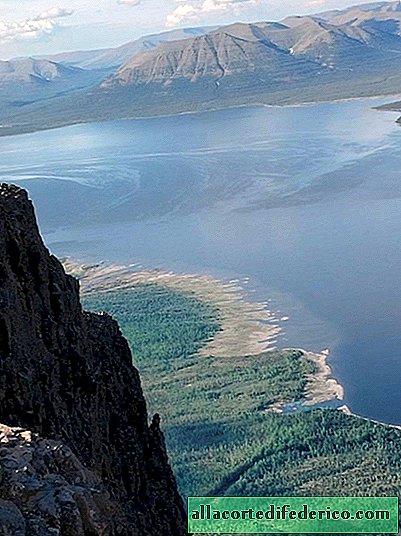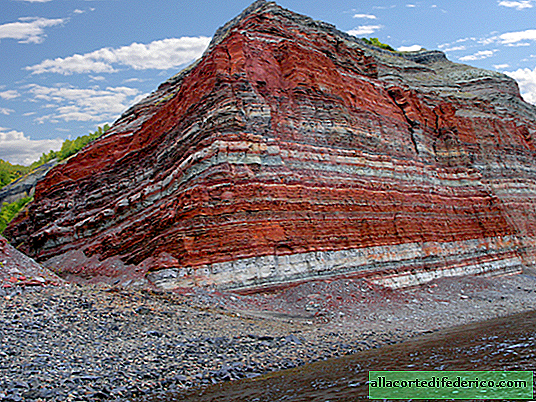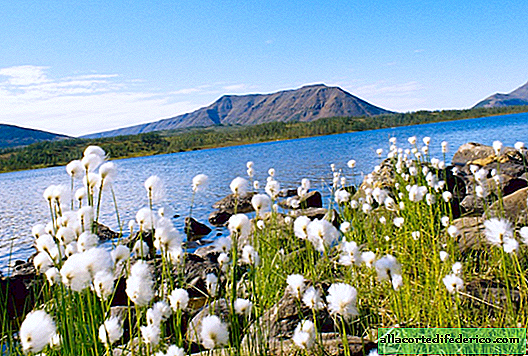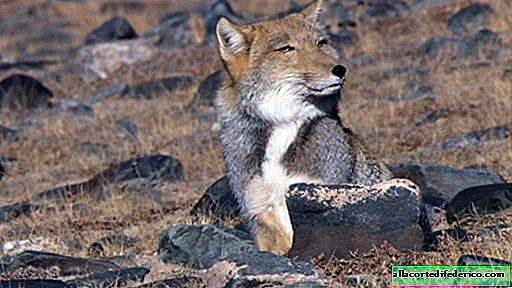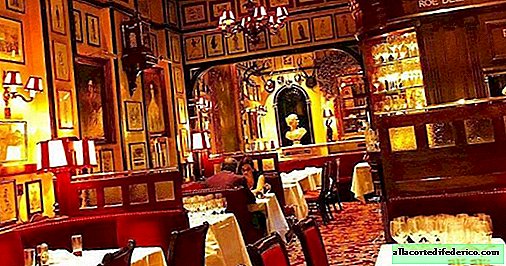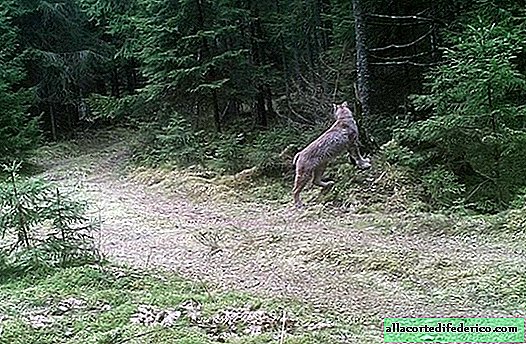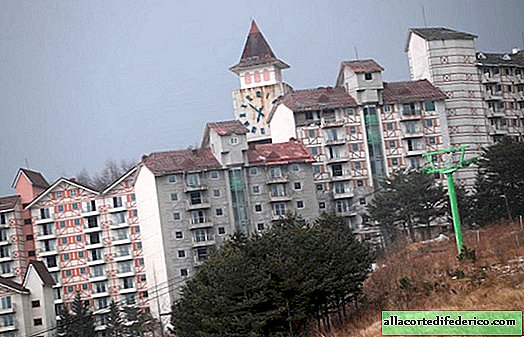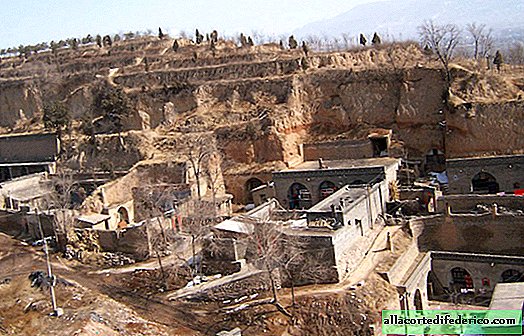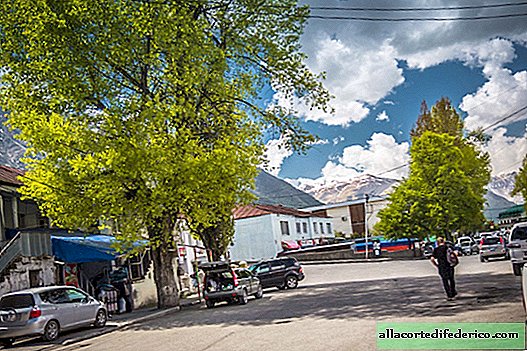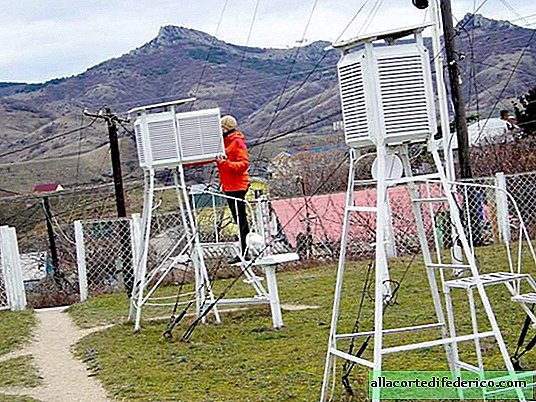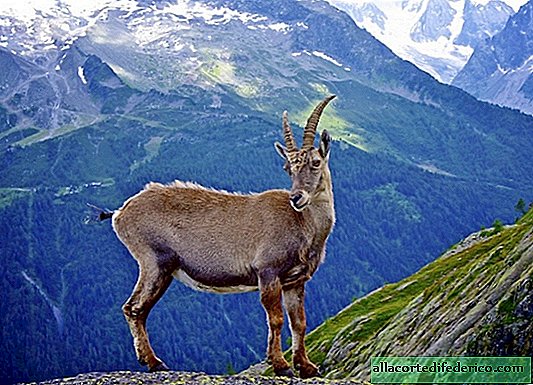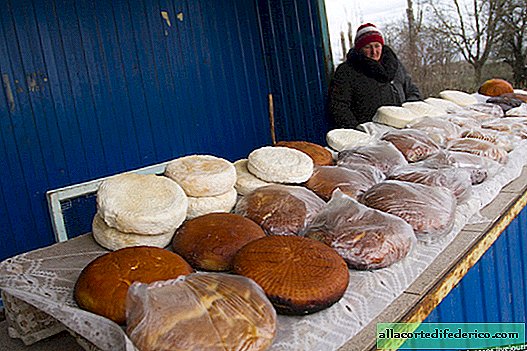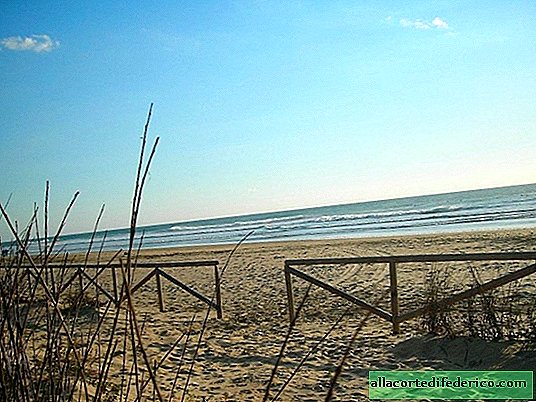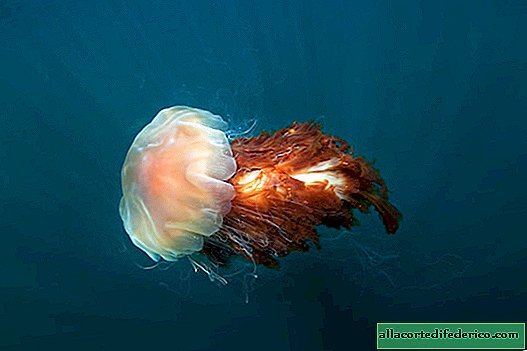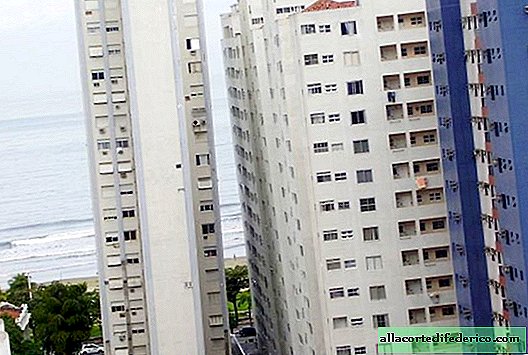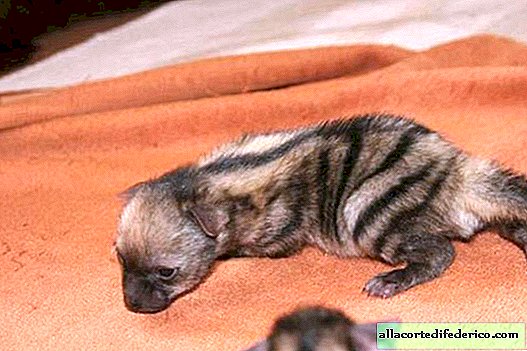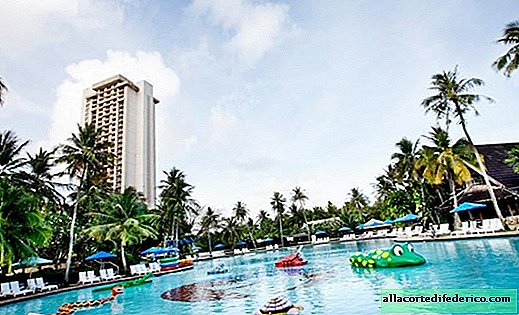Putorana Plateau - the lost world of Siberia
When I saw this photo, I first thought it was Table Mountain in Ireland. And all this happens with us, in Russia!
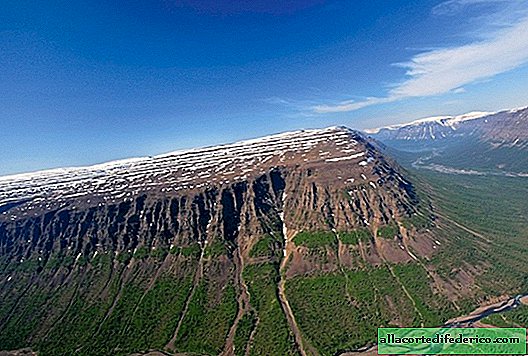
This plateau is an endless basalt plateau that the plow never touched. It is located in the northwest of the Central Siberian Plateau. From the west and north, the plateau ends with steep ledges resembling a giant staircase. Putorana Plateau is often called the "land of ten thousand lakes and thousands of waterfalls" - by the number of waterfalls, the plateau really takes first place in Russia. But to get to all this beauty yourself there is nothing even to think about, you need to look for a guide. Otherwise, the risk of getting lost in deep gorges and canyons is too great.
Let's look at it in more detail ...
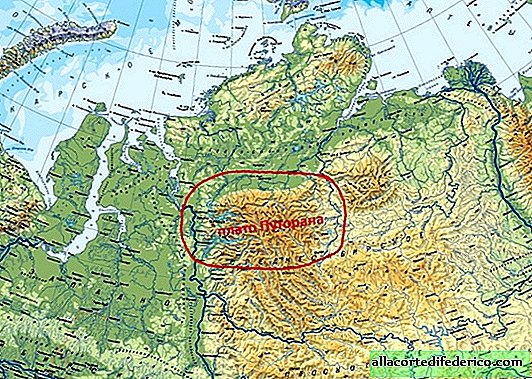
Putorana is a vast and practically unaffected by civilization basalt plateau that rises in the north of Eastern Siberia a little north of the Arctic Circle. The Putoransky Reserve, created in 1988, is the main part of the plateau. It is one of the largest in Russia.
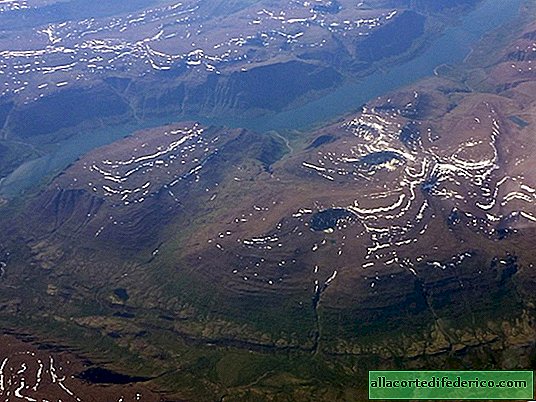
To science - primarily geology and geomorphology - this mountainous area gives a classic example of the so-called trap (stepped) relief. This is a whole complex of high flat-top massifs separated by deep and wide stepped canyons. Such a relief arose here as a result of the rise of the ancient lava plateau formed (even at the turn of the Paleozoic and Mesozoic) with the outpouring of a huge mass of hot basalts, which led to the appearance of gigantic tectonic faults in the lava thickness. Due to the different strengths of horizontally lying basalt and tuff layers, the slopes of the formed gorges acquired a pronounced stepwise character. The thickness of the lava cover in the center of Putoran reaches 1500 m, and where the slopes of the mountains are bare, it can be counted up to 40 layers.

Over time, tectonic cracks were developed by glaciers and occupied by rivers and narrow deep lakes (Lama, Keta, Glubokoe, Khantayskoye, Ayan, etc.), which form its unique appearance and are very characteristic of the plateau. These exotic fjord-shaped lakes, reaching 100-150 km in length and up to 400 m in depth, are considered the largest in Siberia after Baikal and Lake Teletskoye. They keep rich reserves of the purest fresh water. In total there are more than 25 thousand lakes on the plateau, but only 18 of them have an area of more than 100 sq. Km. Another plateau decoration is numerous waterfalls, including a 108 m high waterfall in the Kandy River Valley, one of the highest in Russia.
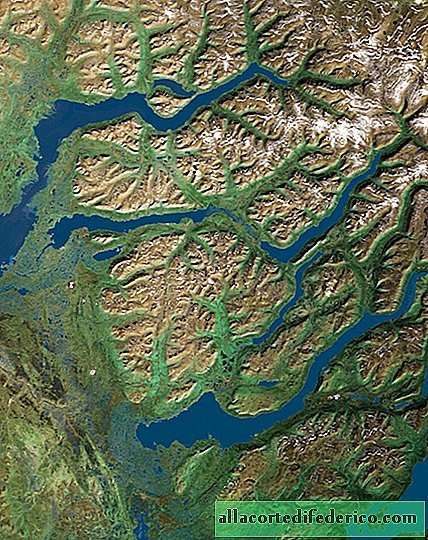
The main climatic lines divide the Putorana plateau in two directions, which determines the unexpectedly huge biodiversity for these latitudes. One boundary defines the boundary of the northern taiga and forest-tundra, the other divides the plateau into the western and eastern parts and determines the eastern limit of the distribution of western taiga vegetation.
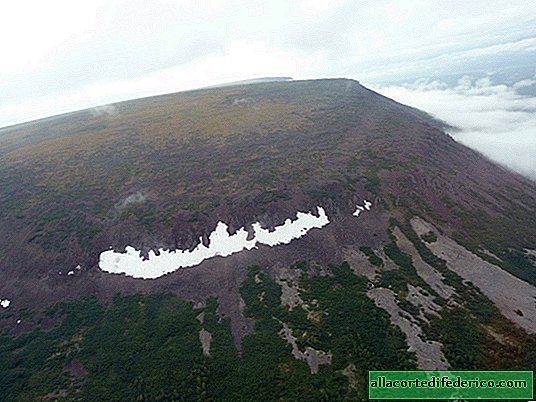
The vegetation cover includes larch taiga, light forests and mountain tundra. In the floristic list of the reserve there are about 400 species of higher plants, including several rare, relict and endemic forms.
There are 34 species of mammals in the reserve. Here lies the migration route of the largest in Eurasia and, obviously, in the world Taimyr population of wild reindeer, numbering more than 500 thousand animals. The plateau is the only habitat in the world of one of the most poorly studied artiodactyls listed in the Red Book of the Russian Federation, the Putorana ram, which about 15 thousand years ago was torn from the main population and formed as a separate subspecies.
About 140 bird species have been recorded in the reserve. The main part of them nests here, including rare predators - the white-tailed eagle and the gyrfalcon, the number of which nests on the plateau is especially large. Numerous Putoran ponds serve as resting places for thousands of migratory birds.

For the plateau, a peculiar trappy relief is usual, consisting of huge ledges resembling stairs, as well as unique table mountains 1000 - 1500 meters above sea level, intersected by huge canyons.
The concentration of waterfalls here is higher than anywhere else in Russia. There is no other such elevated area in the world that could be compared with the Putorana plateau in the number and depth of lakes. There are more than 25 thousand of them here, up to 150 km long and 400 meters deep. The plateau is characterized by a combination of plant and animal communities of the forest (mountain-north-taiga), subalpine (mountain-forest-tundra), alpine (mountain-tundra) altitudinal-landscape zones.
More than 1,300 plant species have been noted here. In the basins of the Kutaramakan and Irkinda rivers, the northeastern borders of the ranges of Siberian larch and Siberian spruce pass. Here is the northern limit of the distribution of flying squirrels, lynx, sable, and capercaillie.
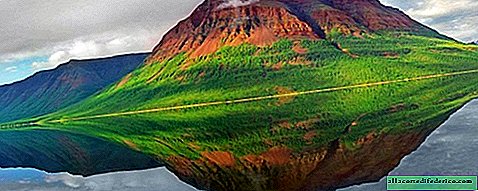
A unique feature of the territory is that it is located within the Yenisei zoogeographic border, which is recognized as one of the largest meridional biogeographic boundaries of Eurasia. This is due to the increased species diversity of the local fauna.
The reserve is inhabited by: 36 species of fish, 1 species of amphibians, 184 species of birds, 34 species of mammals. Of the rare and endangered birds, piscula, white-headed loon, red-throated goose, little swan, osprey and golden eagle deserve special attention.
